-
How to make a bug hotel: the right way
 Lee Burkhill: Award Winning Designer & BBC 1's Garden Rescue Presenters Official Blog
Lee Burkhill: Award Winning Designer & BBC 1's Garden Rescue Presenters Official Blog

No matter what size garden you have, encouraging wildlife will help create a diverse environment on your doorstep. This will not only benefit your plants via increased pollination but also welcome a host of wonderful creatures from insects, butterflies, bees, birds and mammals. Building a DIY bug hotel can also help encourage your children to garden. Providing a mini wildlife safari activity for you and your children.
While there are plenty of guides online that show beautiful bug hotels, the harsh reality is that they are not fit for the purpose. I'm going to explain exactly what to look for in a bug hotel and how building your own is both easy and more beneficial for your carbon footprint!
A bug hotel also known as an insect hotel or insect house is a manmade structure built to provide shelter and refuge for garden insects. Often build to home a number of different insects and wildlife species in urban garden spaces.
Bug hotels help benefit lots of different types of insects, minibeasts and wildlife in the garden. To name a few of the bug hotel inhabitants:
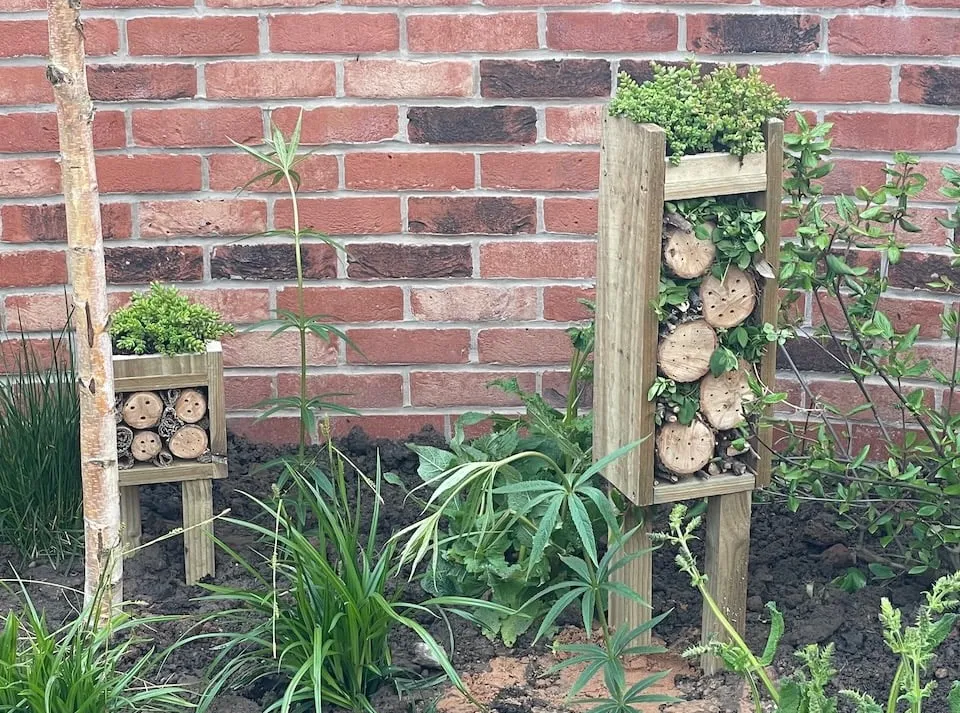
The biggest issue with shop-bought bug and insect hotels is that they have been designed to look pretty before any real consideration is made for wildlife. You may notice that there's a variety of spaces with different materials in fancy shapes or layouts. Some of them are even painted in bright dayglo colours (Not so great to hide away from predators).
However, these spaces are often too small for creatures to happily colonise, or worst the spaces are too large meaning that preditors of the very bugs you're looking to encourage can enter the hotel.
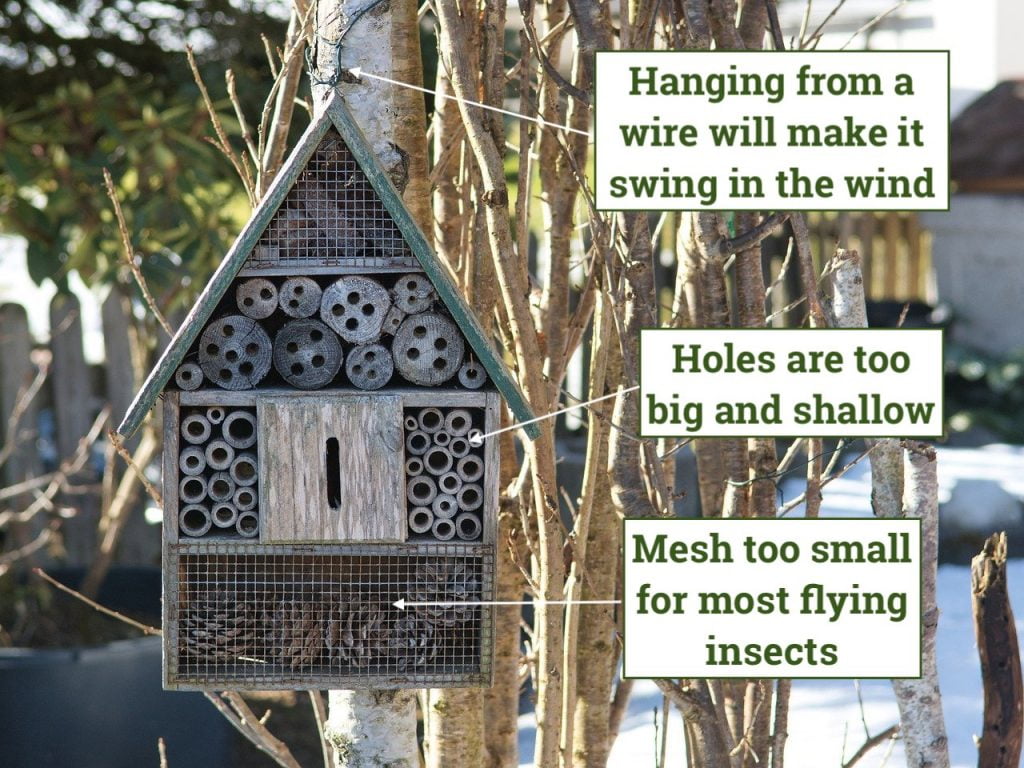
Another issue with bug hotels is that they try and encourage competing insects into the hotel. This can spell disaster to various creepie crawlies as the very refuge you're creating is also offering them up as a buffet to their predators. In fact, some entomologists (people who specialise in studying insects) have reported that bug hotels can actually decimate populations due to increased parasites or competing predators.
This seems to be especially true for solitary bees and the canes used to attract them which are left unmaintained spreading disease. Kate Bradbury has written that mismanaged bee hotels, that are left without being cleaned each year, can wipe out entire colonies of different solitary bees.
Bug hotels provide a safe space for insects and mini beasts to shelter, lay their eggs, raise their young, and help avoid being eaten by predators in your garden.
Nature is struggling. The increased paving over of our gardens, urbanisation and pesticide use has all led to a decline in the numbers of insects and wildlife. Bees are more notably reported to be decreasing each decade.
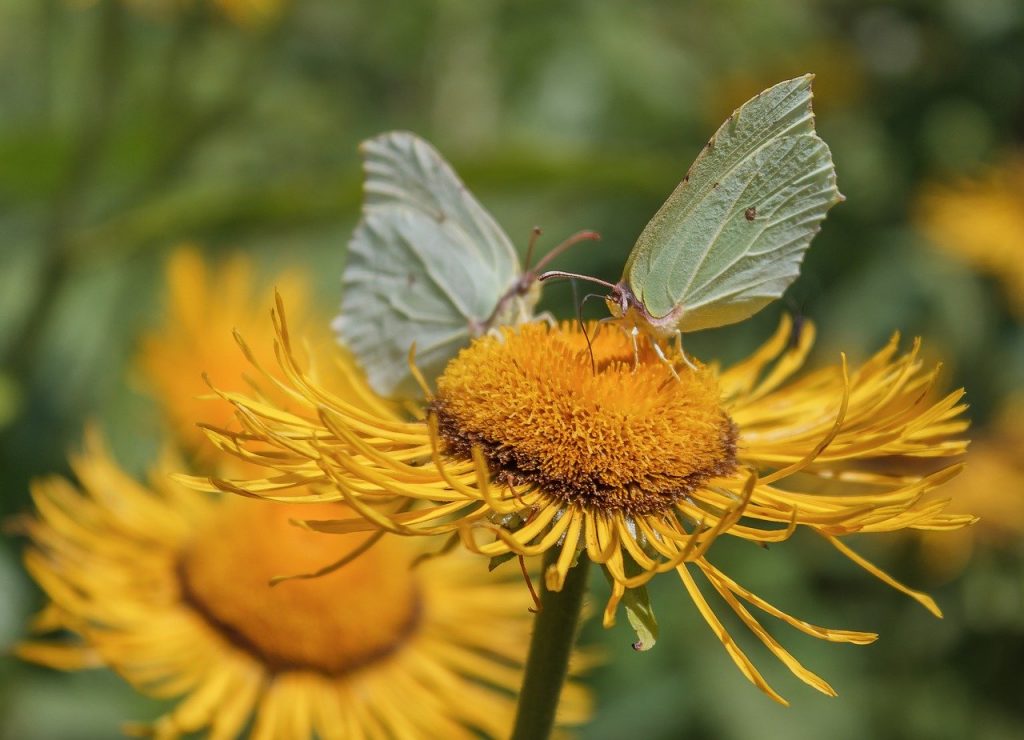
Building a bug or insect hotel can help reverse this change by offering refuge in our gardens to wild life. Not only that, but by increasing diversity, you also encourage birds, which can help reduce your garden slugs and snails. So it's beneficial to everyone!
Here are the top 10 benefits of having a bug hotel in your garden and why you should build your own:
Bug hotels provide habitats for a wide variety of insects, increasing biodiversity in your garden or local environment. Making stronger eco systems and healthier living for both us as gardeners and mother nature!
Many insects that inhabit bug hotels are natural predators of garden pests, helping to keep pest populations in check without the need for chemical pesticides. Saving you time and money.
Bug hotels attract pollinators such as bees, butterflies, and hoverflies, which play a crucial role in pollinating flowers and promoting fruit and vegetable production.
Bug hotels offer a hands-on way to learn about insects and their importance in the ecosystem, making them ideal educational tools for schools, nature centres, and home gardens.
Providing habitat for insects through bug hotels can contribute to conservation efforts, especially for declining species such as solitary bees and butterflies.
By attracting beneficial insects, bug hotels help create a healthier garden ecosystem with improved soil fertility, plant health, and overall resilience to pests and diseases.
Bug hotels can be creatively designed and decorated, adding visual interest and aesthetic appeal to gardens, parks, and other outdoor spaces. They can bring to life your wildlife-friendly garden design!
Incorporating bug hotels into your garden promotes environmentally friendly gardening practices that support wildlife and reduce reliance on synthetic chemicals, which is what we Garden Ninjas are all about.
Bug hotels can be active year-round, providing ongoing opportunities for observation and enjoyment as different insect species come and go throughout the seasons.
Building and maintaining a bug hotel can be a fun and rewarding activity for people of all ages, fostering a deeper connection to nature and the fascinating world of insects. Children, in particular, love to build bug hotels and help engage them with your garden and nature.
Here are a few tips on what to look out for in a bug hotel if you're buying one ready-made.
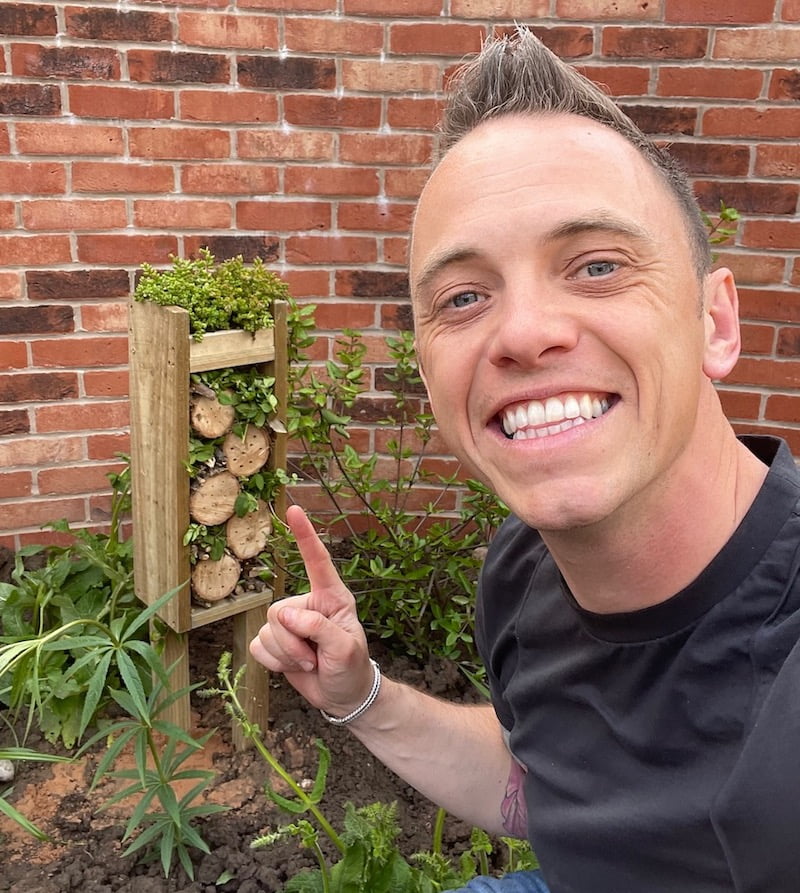
Building a bug hotel is relatively straightforward. In my guide to building a bug hotel, I prefer to use wooden pallets and natural materials. This is because it helps recycle materials you may already have in your garden further reducing your carbon footprint whilst encouraging wildlife! What's not to love?
Most wooden pallets will have a central support bar. I make the first cut on the right of this. It then leaves you with two long rectangles, one larger than the other.
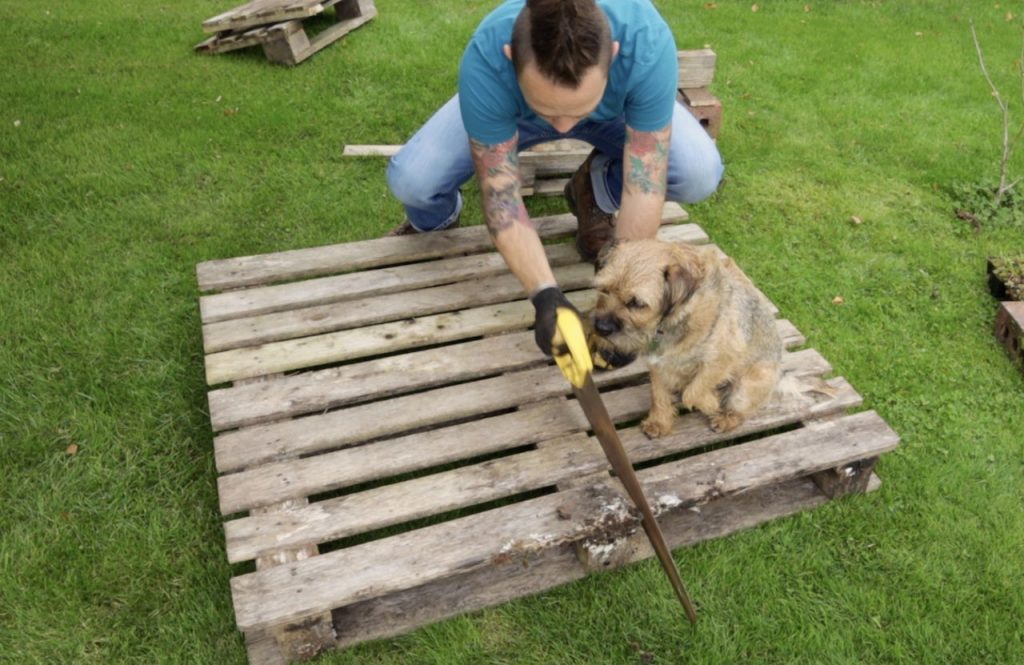
Again cutting to the right of the middle support bar of this piece. It will leave two square (ish) pieces of the pallet. One bigger than the other.
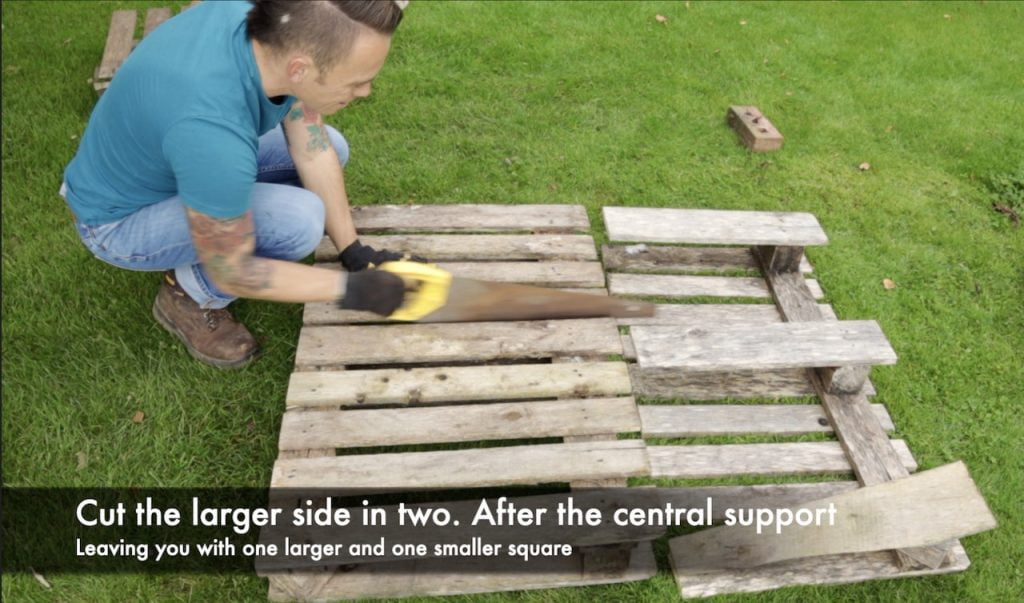
Did you know that you can take my course and learn how to become a Garden Ninja yourself? Click here for details
Repeat the cut above with the second pallet; you should be left with 2 larger square pieces and 2 smaller pieces. Along with offcuts which can be further cut up or taken apart to use as the material to fill the bug hotel with.
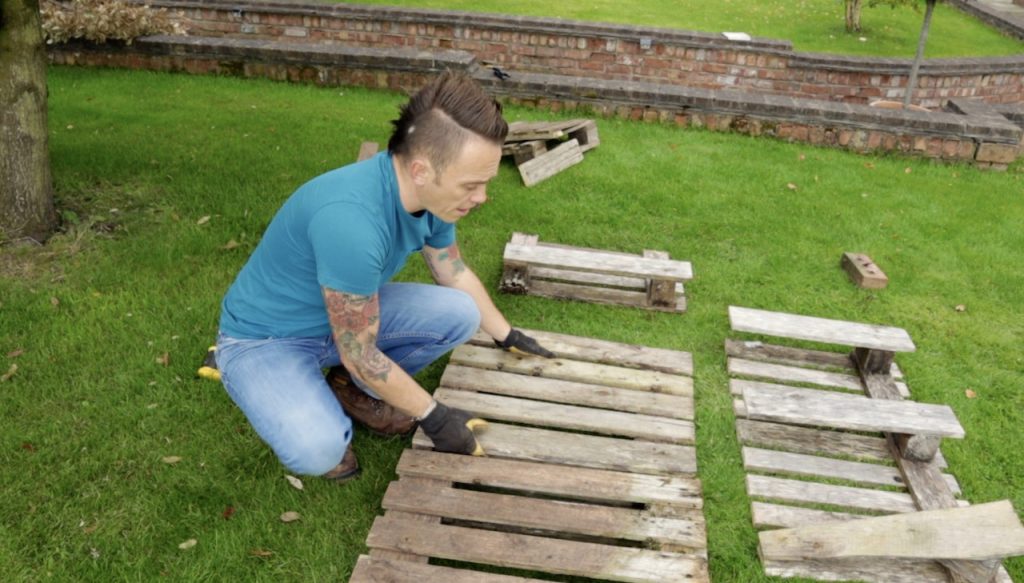
Choosing the best place for your bug hotel before building it is best. Avoid anywhere too busy or near the front of garden borders. If it's too close to humans then you may find that insects avoid the hotel. Nestle it at the back of a border somewhere quiet to encourage the most wildlife.
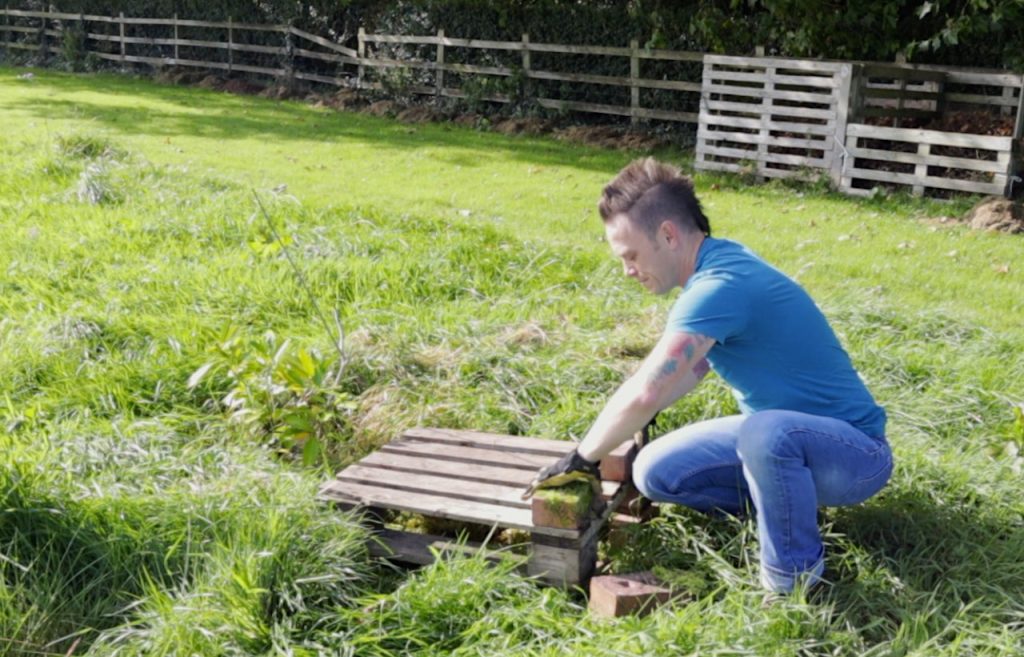
If it sits directly on the soil, it may start to rot. Also, by elevating it, you're creating a nice crawl space for insects and other garden wildlife like slow worms.
This is the base of your bug hotel in which all the levels and materials to house your insects will be built upon.
Place these 4 bricks on the base pallet, then add one of the smaller pallet offcuts. The pallet offcut will only have one support on it meaning it sits at a slant. Use two bricks to raise the free side up. These bricks provide support and space between the pallets.
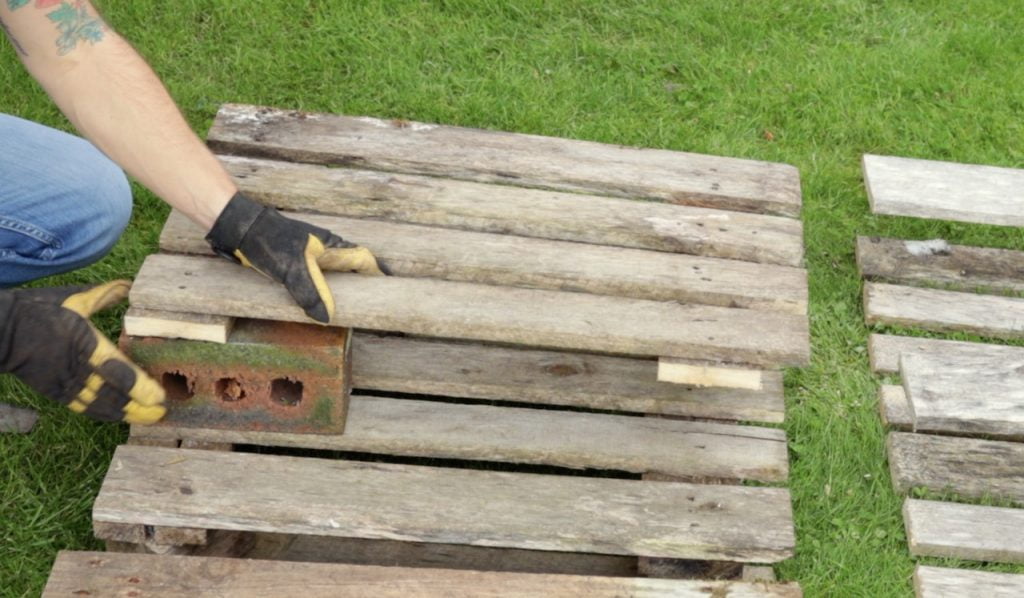
This matching piece to the base will become the roof of your bug hotel and provide the neat top layer for a green roof.
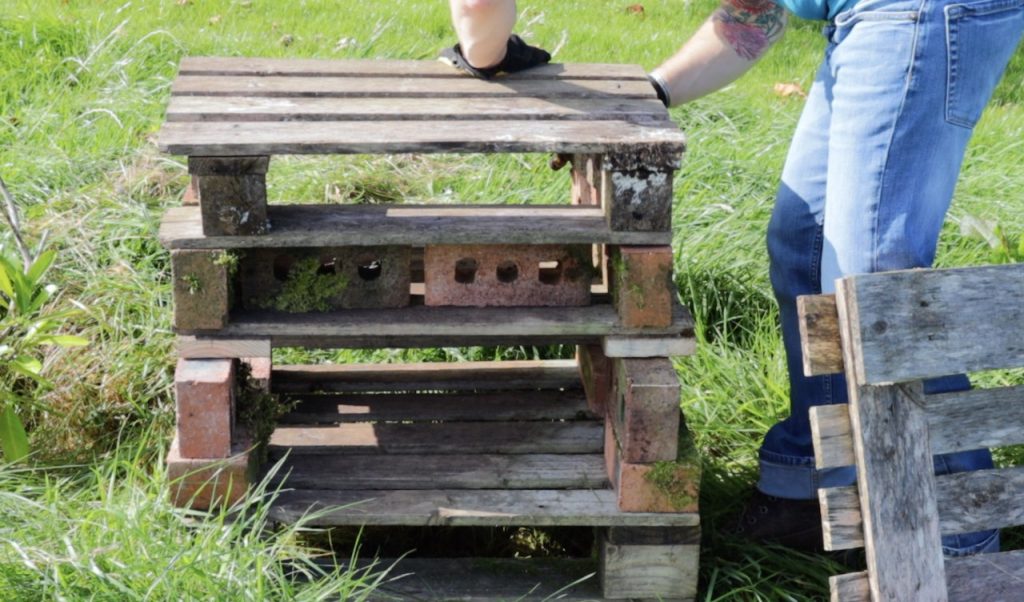
After adding the final top pallet the roof then needs an overhang over the rest of the insect hotel to offer protection against the rain. I finish my roof off with some bricks to tie it all together nicely.
In my guide, I'm using a sedum green roof tile to finish off the bug hotel. However, you could use some wildflower turf or other succulent plants to pretty up the roof!
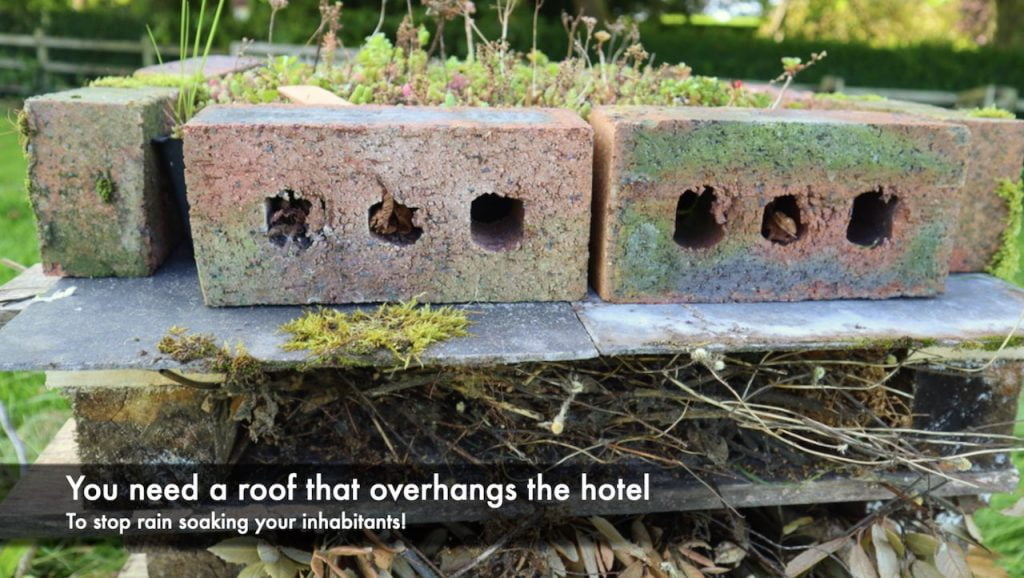
I use a mix of twigs (tree prunings), herbaceous clippings from the Exploding Atom Garden, Bits of old wood (including any remaining pallet offcuts), dried leaves and broken bits of terracotta pots.
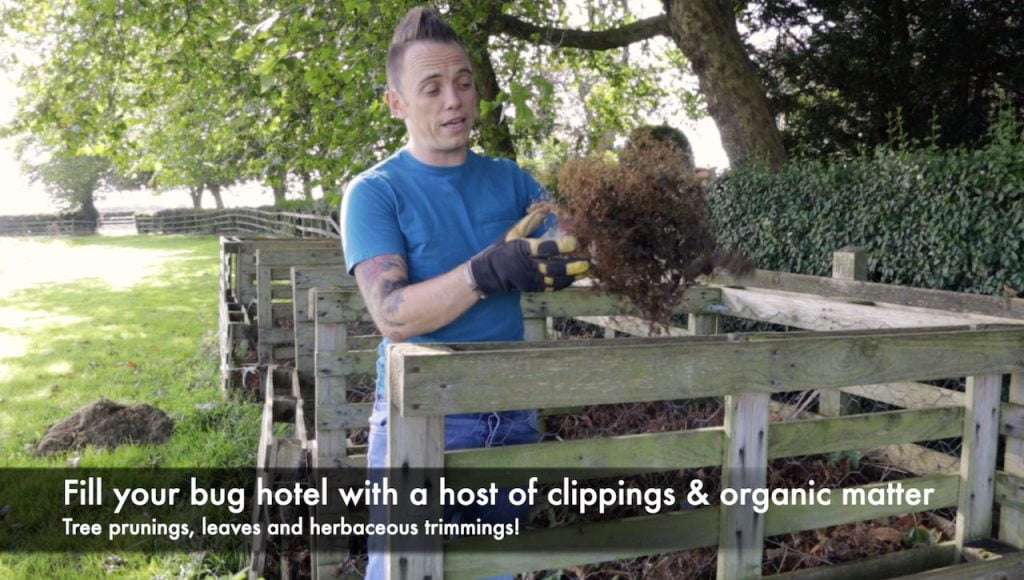
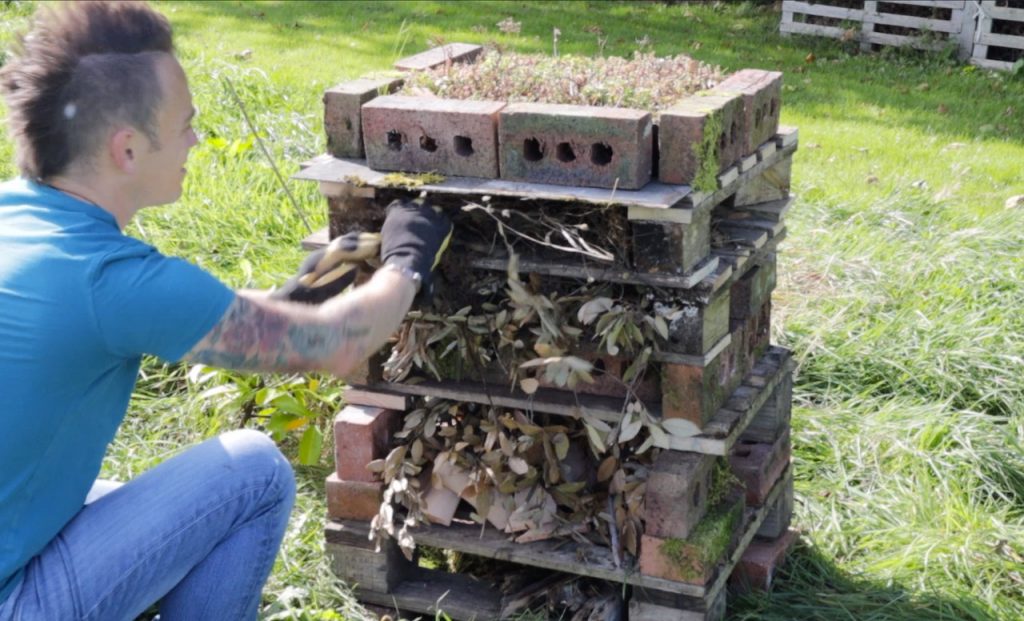
Once your bug hotel is complete it should be a mecca for all sorts of wildlife offering a safe haven for them to breed and overwinter. Note that you can refill your bug hotel is need be as the materials biodegrade meaning it will last far longer than a shop-bought insect hotel.
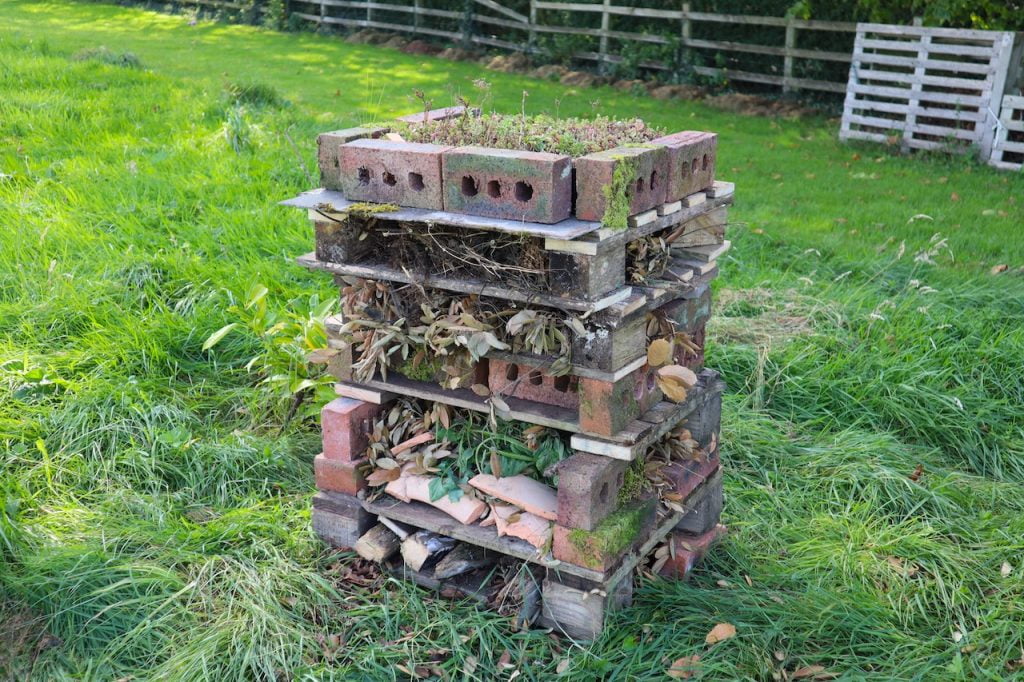
More often than not, shop-bought bug hotels try to accommodate too many insect types at the same time, especially solitary bees who nest in tubes, which can cause insects to end up either preying on each other or becoming a target for parasites.
Solitary bees are one very exacting inhabitant that I believe warrant their own separate hotel to protect them.
This is why I never add bamboo canes to my bug hotel. Firstly, unless they are sanded off to remove splinters, they can actually injure solitary bees and lacewings. The second issue is they are usually far too big or have the wrong depth to be useful.
Solitary bees nest in tubes between 6mm and 10mm (there are exceptions but these diameters are the best rough fit).
Bee hotels will require yearly maintenance and cleaning which is the second reason why shop-bought ones should be avoided. More often than not the bamboo or paper tubes are not removable. Once the solitary bees have nested, laid their eggs in the tubes and pupated they will hatch the following spring. Eating their way out of the tube, where the female often lays multiple eggs in individual chambers.
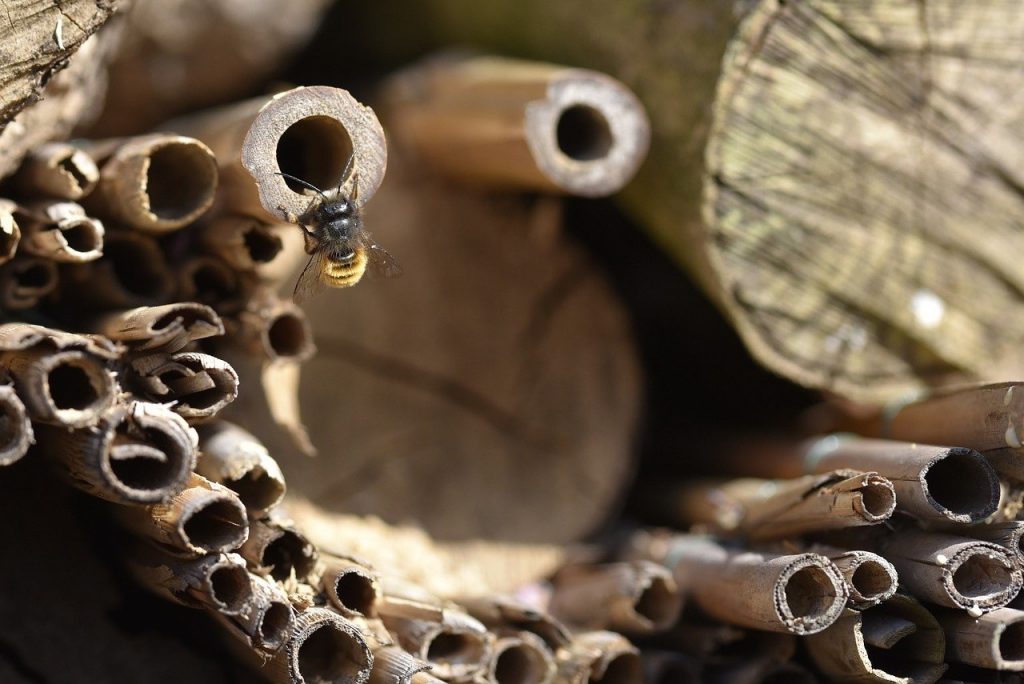
These tubes need to be cleaned once they have hatched to remove debris and reduce the risk of disease or parasites. Shop-bought bee hotels are rarely designed with this purpose in mind.
One way to make a solitary bee hotel is to use fence posts that already may exist in your garden, making this an almost zero-cost option! There's no need to be sawing bamboo canes, and you can clean them with a pipe cleaner each spring.
They also need to be between 15-2m off the ground. In a South or Southeastern facing garden aspect/position. They like full sun in the day and to be away from too much vegetation. So don't place them behind dense shrubs!
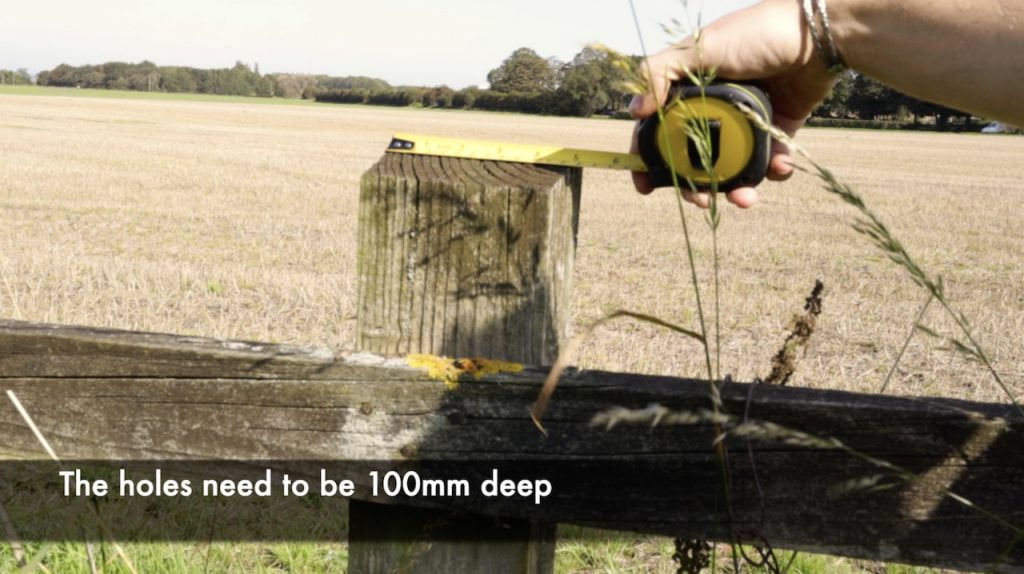
6mm, 8mm and 10mm preferably.
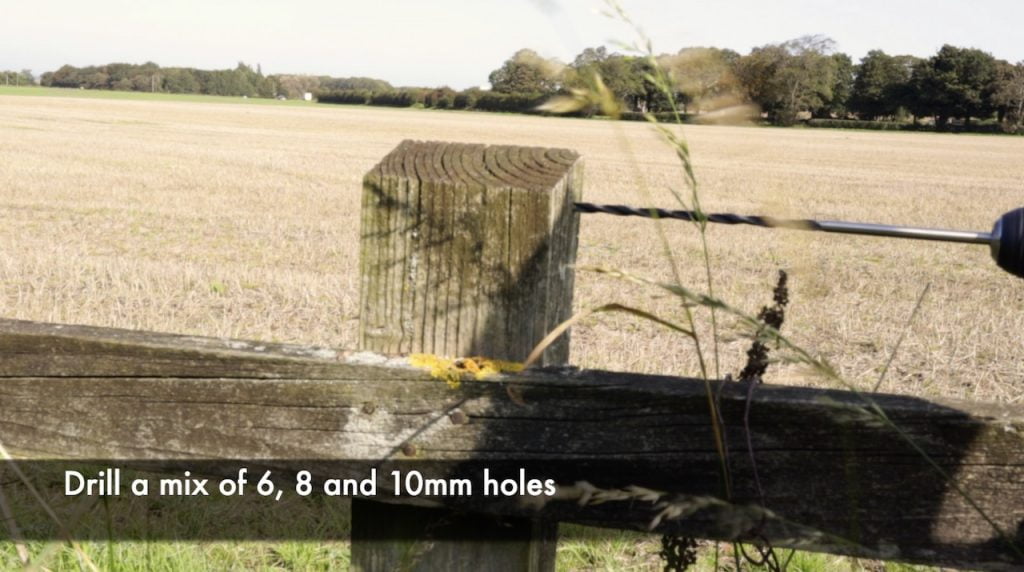
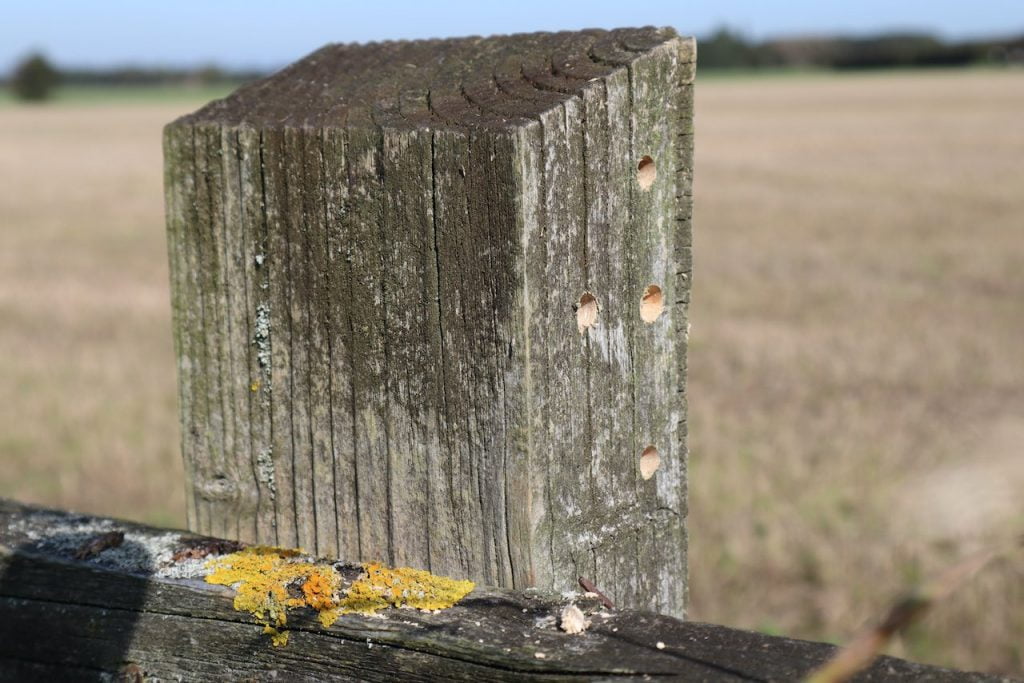
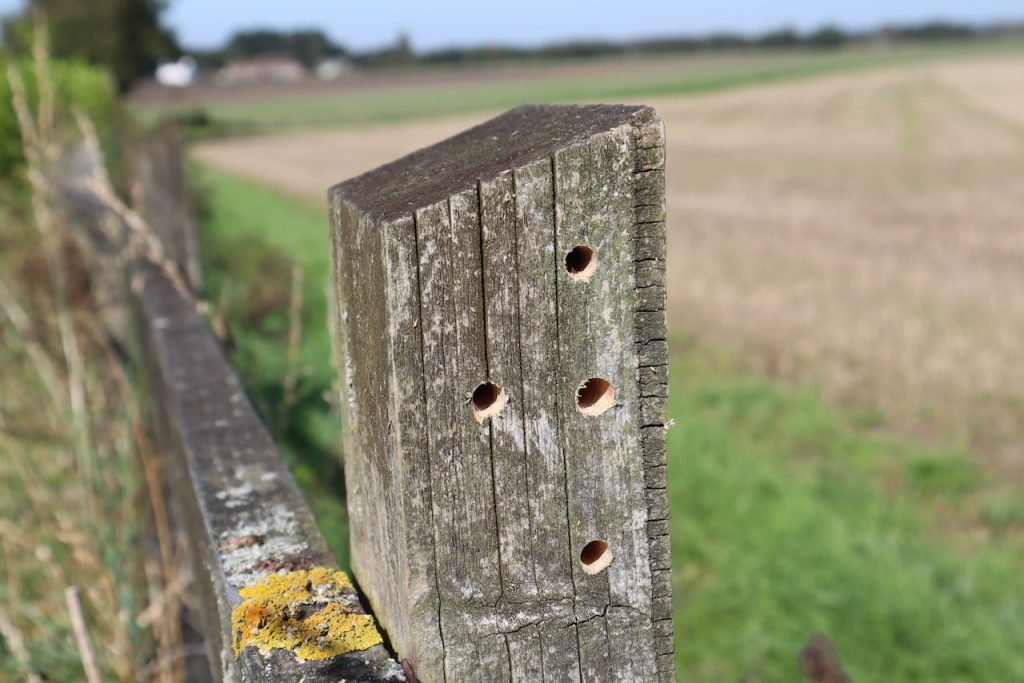
Each spring, I will wait for any bees to emerge and then, using a pipe cleaner, give each of these holes a good clean. That way, when new bees arrive, they have a more hygienic nesting spot with less chance of disease or parasites.
Lacewings are not only beautiful flying insects but also a natural defence against aphids, which they feed off voraciously! You may see plastic bottle lacewing hotels and other shop-bought ones featuring corrugated cardboard. While these work tend to have a short shelf life and can easily become damaged by rain and the elements.
There are 18 species of Lacewing in the UK, and they are seen very much as the gardener's friend.
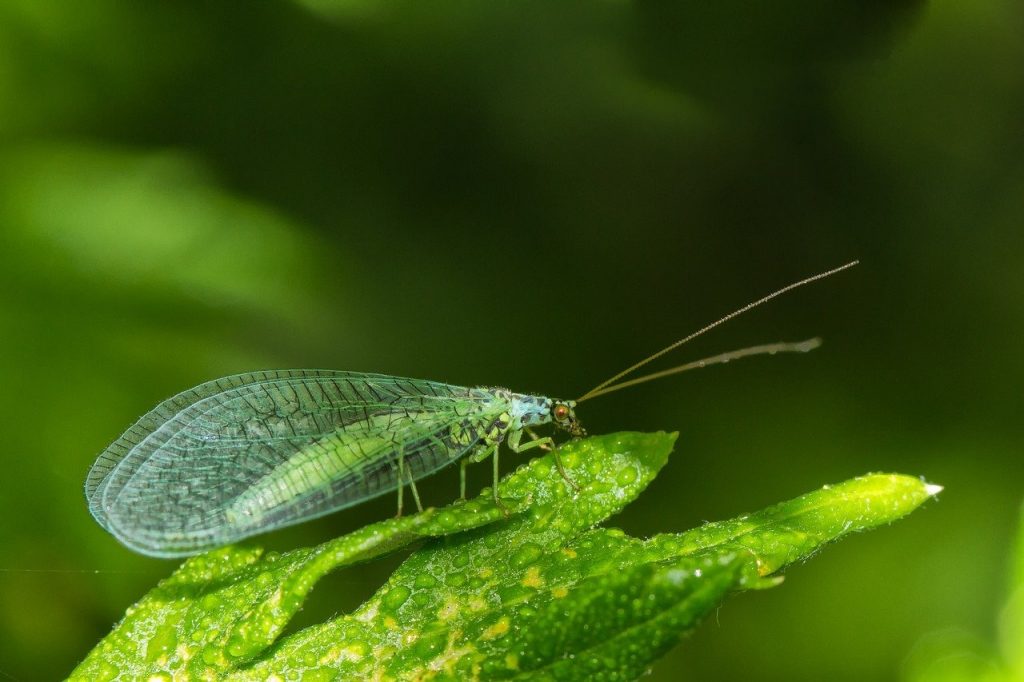
Both adult Lacewings and larvae are carnivorous and often feast on aphids in the garden. The larvae can suck the aphids’ juices as they pierce their bodies. They are truly tenacious creatures and can even use the drained bodies to hide under if need be!
Lacewing females like to lay their eggs on the underside of herbaceous leaves attached to threads of mucus, and these eggs sometimes look like hairs. The best environment for Lacewings to nest is by increasing the number of herbaceous perennials you have in the garden. They tend to prefer to lay on these rather than bug hotels.
However, you can use cuttings of herbaceous leaves and stalks to then stack in your bug hotel which can encourage them. I, however, just make sure I have plenty of variety in the garden which seems to attract them!
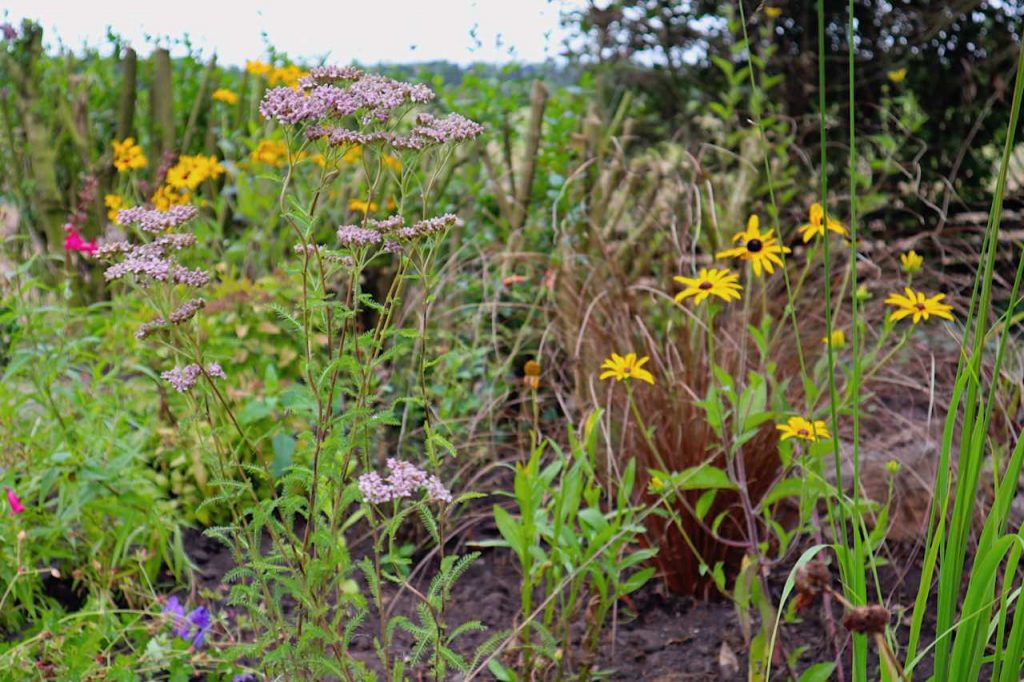
Ladybirds are another garden champion eating their way. Their bright red spots warn off predators due to their bitter taste, and they can also emit a pungent aroma to help protect themselves.
With around 40 species in the UK, they are the best-known of all the aphid eaters in the garden. Ladybirds love leaf litter to hibernate in during winter meaning your bug hotel can be an excellent place for them to stay.
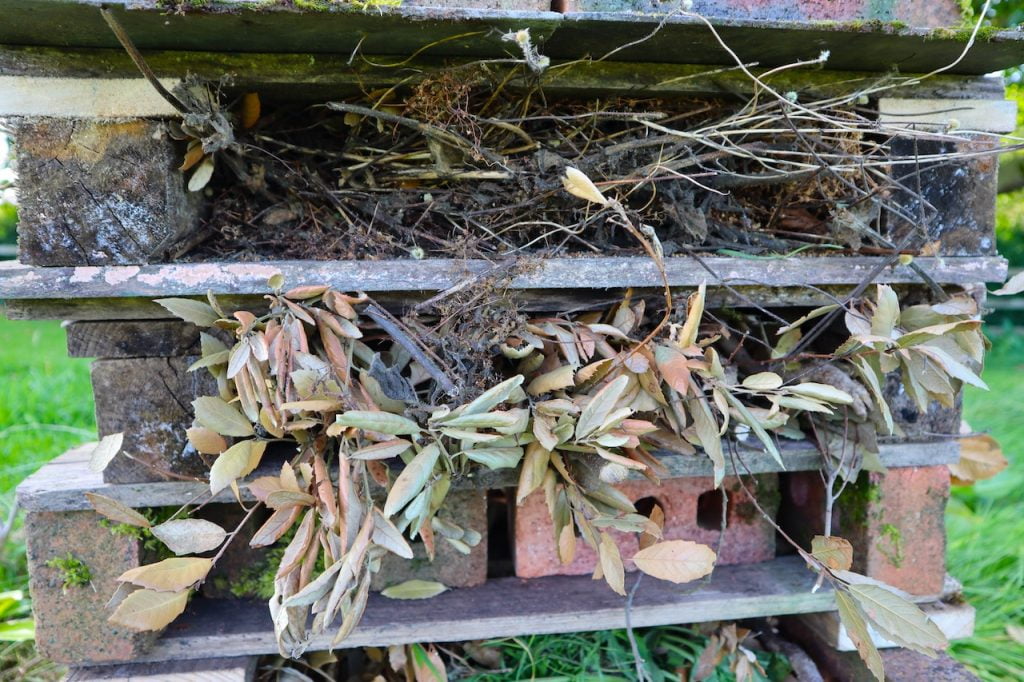
They then emerge in spring to feed and mate. The females lay eggs which only take around 4 days to hatch. Their larvae are blue with cream spots that then feed fearlessly off aphids and other small insects as they go through a process of moulting until they reach their bright red colour.
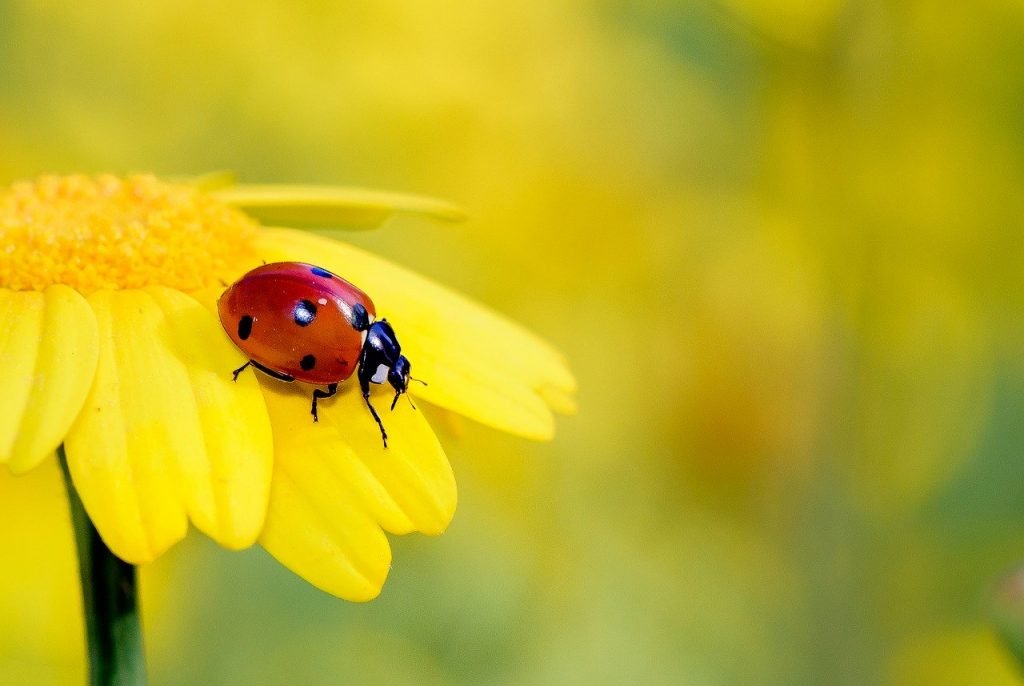
Here are 20 UK bugs and insects that could inhabit a bug hotel if made correctly. All of them add biodiversity to your garden and are food sources for other visitors, such as birds and mammals.
These insects play various roles in the ecosystem, including pollination, pest control, and decomposition, making them valuable residents for any bug hotel!
By building a bug hotel you're not only helping to give mother nature a helping hand but you become far more connected to your own garden. You'll be amazed at the creatures a DIY bug hotel encourages and the benefits you'll see in your own garden by building a bug hotel of any size. You're also reusing materials that otherwise would go to waste, so you're also helping to reduce your carbon footprint which benefits everyone!
If you’re looking for further garden design help or guidance, why not book one of my hour-long online garden consultations? It can help set you off on the right path and help make your garden awesome! Take a look at my online booking here. Book an Online Garden Consultation with Garden Ninja
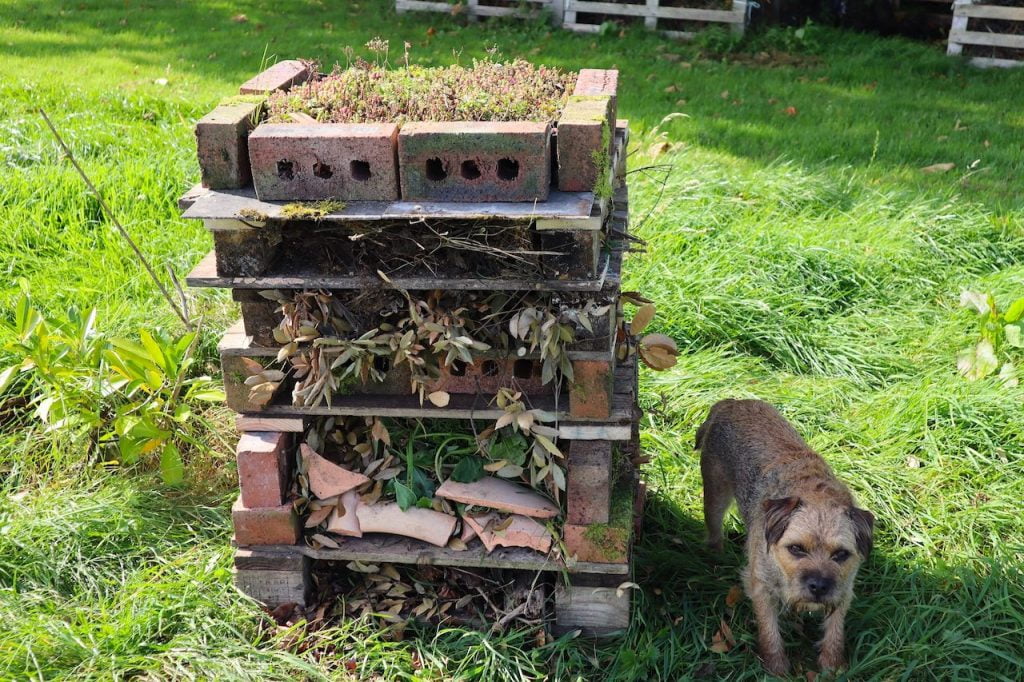
Why not share your gardening stories with me on Social media? You can Tweet, Facebook or Instagram me with your designs. If you need gardening advice, why not check out my YouTube gardening guides and subscribe if you haven’t already?
Happy Gardening.


You must be logged in to post a comment.

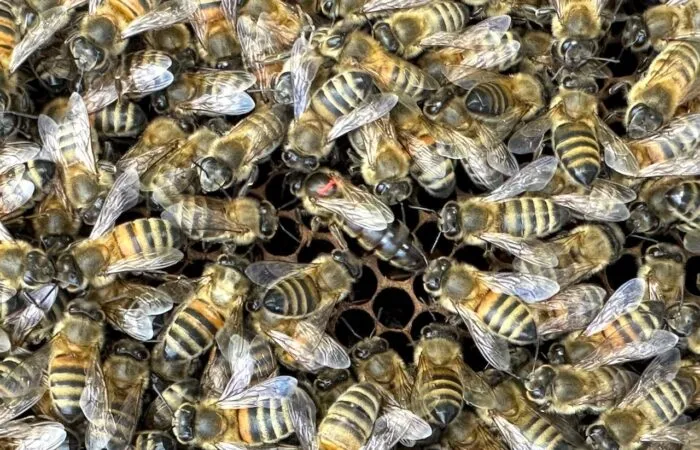

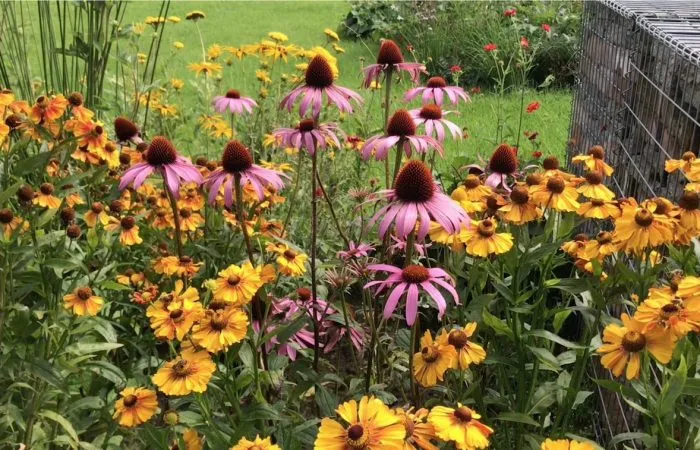
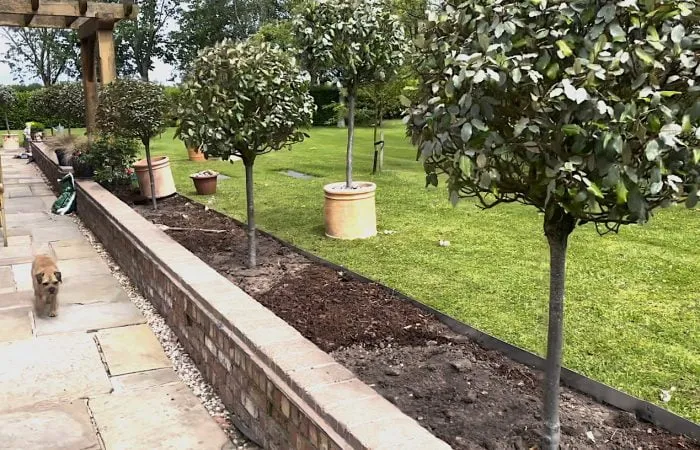

JOIN THE NINJAS

Be the first in line for new Guides, Discount codes and Offers
I love this article. I can’t wait to build one and see Lady Beetles come into my garden.